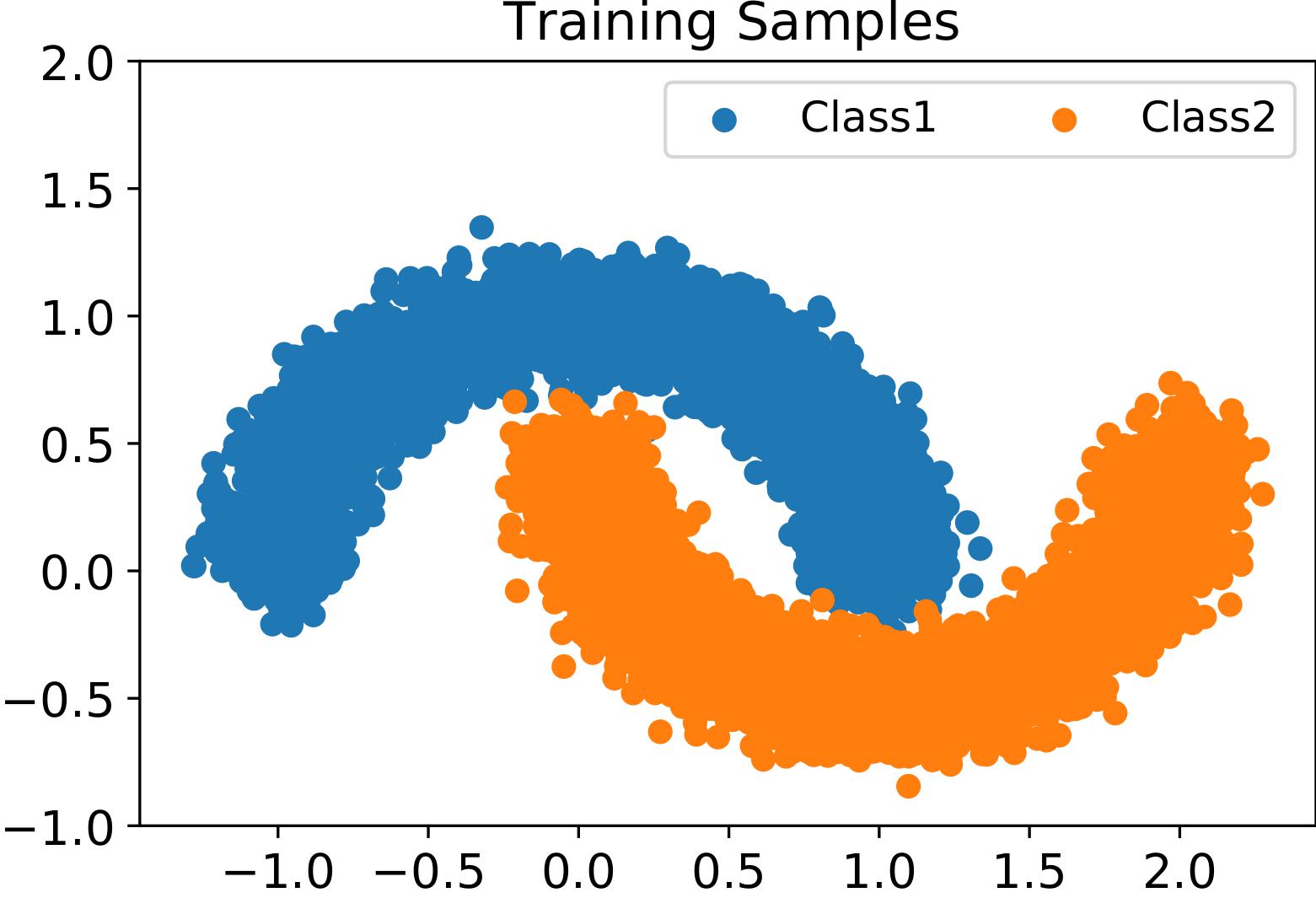Traditional supervised learning aims to train a classifier in the closed-set world, where training and testing samples share the same label space. In this paper, we target a more challenging and realistic setting: open-set learning (OSL), where there exist testing samples from the classes that are unseen during training.
Although researchers have designed many methods from the algorithmic perspectives, there are few methods that provide generalization guarantees on their ability to achieve consistent performance on different training samples drawn from the same distribution. Motivated by the transfer learning and probably approximate correct (PAC) theory, we make a bold attempt to study OSL by proving its generalization error$-$given training samples with size
Our solution not just learn the decision boundary as what closed-set learning do, but also learn the support set so that the decision region can be built as a closure, as shown in figure (a), (b) and (c).
All the running details can be checked in this repo. Simply open the .ipynb file, the experiment details will be displayed.
To reproduce the experiment, few python package dependencies are required. For simplicity, we display all the running details in jupyter notebooks. The output of each stage is clearly shown.
pytoch
tensorflow
pandas
numpy
scikit-learn
aosr_utility.py contains the AOSR loss function for tensorflow and the isolation forest based open-set sample enrichment function
mnist_exp_showcase.ipynb presents the running details of AOSR on MNIST, Omniglot, MNIST-noise, and noise dataset
cifar10_exp_showcase.ipynb presents the running details of AOSR on cifar10, ImageNet Resize, ImageNet Crop, LSUN Resize and LSUN Crop dataset
Double Moon Encoder: None, scince the input space is
Dense(64, activation='relu'),
Dense(64, activation='relu'),
Dense(32, activation='relu'),
Dense(32, activation='relu'),
Dense(16, activation='relu'),
Dense(16, activation='relu'),
Dense(8, activation='relu'),
Dense(8, activation='relu'),
Dense(3),
Activation(activation='softmax')
To Initialize:
optimizer='adam',
loss='sparse_categorical_crossentropy',
learning_rate=0.001
epochs=5
To Learn
optimizer='adam',
loss=pq_risk(detetor, z_q_sample, z_q_weight, z_p_X, 0.15, 2),
learning_rate=0.001 for 20 epochs
learning_rate=0.0001 for 10 epochs
MNIST Encoder: Plain CNN
Conv2D(filters=100, kernel_size=(3, 3),activation="relu"),
.Conv2D(filters=100, kernel_size=(3, 3), activation="relu"),
Conv2D(filters=100, kernel_size=(3, 3), activation="relu"),
MaxPooling2D(pool_size=(2, 2)),
Conv2D(filters=100, kernel_size=(3, 3), activation="relu"),
Conv2D(filters=100, kernel_size=(3, 3), activation="relu"),
MaxPooling2D(pool_size=(2, 2)),
Flatten(),
Dense(500),
Dense(10),
Activation(activation='softmax')
To Encode:
optimizer='adam',
loss='sparse_categorical_crossentropy',
learning_rate=0.001
epochs=5
MNIST Open-set Learning Neural Network:
Dense(11),
Activation(activation='softmax')
To Initialize:
optimizer='adam',
loss='sparse_categorical_crossentropy',
learning_rate=0.001
epochs=5
To Learn
optimizer='adam',
loss=pq_risk(detetor, z_q_sample, z_q_weight, z_p_X, 0.15, 2),
learning_rate=0.001
epochs=25
CIFAR10 Encoder: ResNet18 To Encode:
optimizer = optim.SGD(net.parameters(), lr=args.lr,
momentum=0.9, weight_decay=5e-4)
scheduler = torch.optim.lr_scheduler.CosineAnnealingLR(optimizer, T_max=200)
CIFAR10 Open-set Learning Neural Network:
Dense(11),
Activation(activation='softmax')
To Initialize:
optimizer='adam',
loss='sparse_categorical_crossentropy',
learning_rate=0.001
epochs=5
To Learn
optimizer='adam',
loss=pq_risk(detetor, z_q_sample, z_q_weight, z_p_X, 0.15, 2),
learning_rate=0.001
epochs=30


